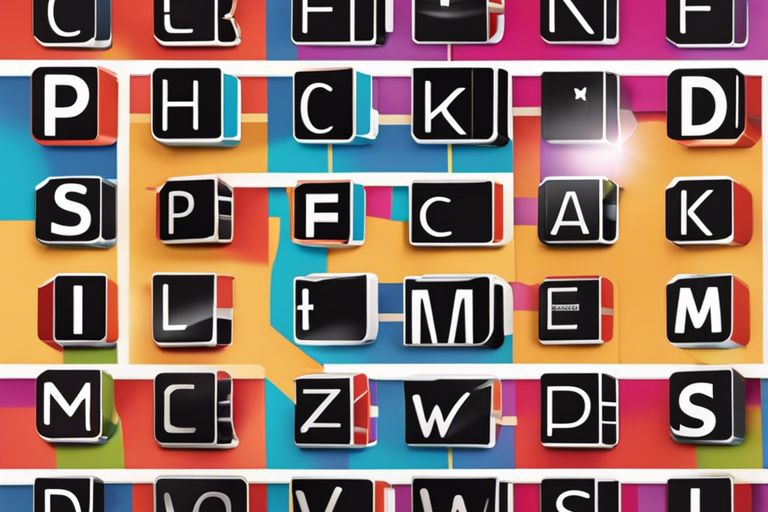Enhancing phonics lessons with technology can revolutionise the way children learn to read and write. By incorporating digital tools and resources, educators can create engaging and interactive experiences that cater to diverse learning styles and abilities. This how-to guide will explore practical strategies for seamlessly integrating technology into phonics lessons, providing teachers with the knowledge and confidence to harness the power of digital innovation in literacy instruction. From interactive games to online resources, this guide will equip educators with the tools they need to make phonics lessons more effective, enjoyable, and impactful for young learners.
Key Takeaways:
- Technology can enhance phonics lessons: Integrating technology into phonics lessons can make learning more engaging and interactive for students.
- Use a variety of resources: Incorporate different types of technology such as educational apps, interactive whiteboards, and online games to cater to different learning styles.
- Monitor and assess progress: Utilise technology to track students’ progress in phonics skills and adjust lesson plans accordingly to meet their individual needs.
- Encourage independent learning: Technology can empower students to practise phonics skills independently, allowing them to progress at their own pace.
- Provide training and support: Ensure that teachers are equipped with the necessary training and support to effectively integrate technology into phonics lessons.
Preparing for Technology Integration
Understanding the Fundamentals of Phonics
Before entering into integrating technology into phonics lessons, it is important to have a solid understanding of the fundamentals of phonics. Phonics is the method of teaching reading and writing by developing learners’ phonemic awareness – the ability to hear, identify, and manipulate the individual sounds or phonemes in spoken words. A strong grasp of phonics principles will help educators effectively choose and implement technological tools to enhance phonics instruction.
Evaluating Technological Tools and Resources
When selecting technological tools and resources for phonics lessons, it is crucial to thoroughly evaluate their suitability and efficacy. Consider factors such as alignment with phonics curriculum objectives, interactivity, engagement level, and potential for differentiation. Look for tools that offer activities catering to various learning styles and abilities, as well as those that provide opportunities for practice and reinforcement of phonics skills.
How-To Implement Technology in Phonics Lessons
Tips for Successful Integration
- Start by introducing interactive phonics games and apps to keep children engaged.
- Use online resources to access a wide range of phonics activities for different learning styles.
- Encourage students to practise phonics skills through multimedia platforms for a varied learning experience.
The successful integration of technology in phonics lessons can greatly enhance learning outcomes.
Factors to Consider for Effective Lesson Plans
- Consider the age and proficiency level of the students when selecting appropriate technology tools.
- Take into account the availability of devices and ensure equal access for all learners.
- Integrate technology in a balanced way to supplement traditional teaching methods effectively.
Knowing these factors will help in creating engaging and inclusive phonics lessons for all students.
Tracking Progress and Assessing Outcomes
Monitoring Student Engagement and Learning
Monitoring student engagement and learning is crucial when integrating technology into phonics lessons. Utilise online tools such as interactive quizzes, reading games, and audio recordings to track how students are responding to the lesson content. Observing how each student interacts with the technology can provide valuable insights into their understanding of phonics principles and identify areas where they may require additional support.
Using Data to Inform Teaching Practices
In the matter of using data to inform teaching practices, teachers can leverage tools like learning management systems and educational apps to collect and analyse student performance data. This data can help educators identify patterns in student comprehension, track progress over time, and tailor their teaching methods to meet the individual needs of each student. By implementing data-driven strategies, teachers can enhance the effectiveness of their phonics lessons and ensure that every student is supported in their literacy development.
Engaging Parents and Caregivers
Communicating the Benefits of Technology in Phonics
When engaging with parents and caregivers about integrating technology into phonics lessons, it is imperative to communicate the numerous benefits it can offer. Technology can make learning phonics more interactive and engaging for children, helping them develop imperative reading and writing skills in a fun and stimulating way. By highlighting how technology can support their child’s learning journey and enhance their phonics skills, parents and caregivers are more likely to be on board with implementing these tools at home.
Providing Resources for At-Home Phonics Practice
To support parents and caregivers in facilitating at-home phonics practice, it is crucial to provide them with resources that are easily accessible and user-friendly. This could include recommending educational phonics apps, online games, printable worksheets, or interactive websites that align with the phonics curriculum being taught. By equipping parents and caregivers with the right tools and resources, they can actively engage in their child’s phonics learning and reinforce the lessons taught in school.
Additionally, hosting workshops or webinars on how to effectively use these resources at home can further empower parents and caregivers to support their child’s phonics development. By creating a collaborative partnership between educators, parents, and caregivers, we can ensure that children receive consistent phonics support both in school and at home.
Overcoming Challenges
Troubleshooting Common Technology Issues
When integrating technology into phonics lessons, it is crucial to be prepared for common issues that may arise. Some common technology issues include connectivity problems, software glitches, or compatibility issues. To troubleshoot these problems, it is helpful to have a tech-savvy person on hand or to educate yourself on basic troubleshooting steps. Ensure that all devices and software are up-to-date to minimise the chance of technical difficulties during your phonics lessons.
Addressing Skepticism and Resistance
Despite the numerous benefits of integrating technology into phonics lessons, teachers may encounter skepticism or resistance from colleagues or parents who are not familiar with technology in the classroom. It is crucial to address these concerns by providing clear explanations of how technology can enhance phonics learning experiences for students. Share success stories and research findings to demonstrate the positive impact of technology integration on phonics instruction.
One approach to addressing skepticism and resistance is to organise training sessions or workshops to demonstrate the effectiveness of technology in phonics lessons. Encourage open communication and collaboration to foster a supportive environment for teachers, parents, and students to embrace the integration of technology in phonics instruction.
Conclusion: Integrating Technology into Phonics Lessons – A How-To Guide
In the final analysis, integrating technology into phonics lessons can greatly enhance learning experiences for young learners by making lessons more engaging, interactive, and personalised. By following the steps outlined in this how-to guide, educators can effectively incorporate various technological tools such as educational apps, interactive whiteboards, and online resources to reinforce phonics skills. Through a combination of traditional teaching methods and innovative technology integration, teachers can create a dynamic learning environment that caters to different learning styles and abilities. By embracing technology in phonics lessons, educators can empower students to become confident readers and achieve academic success.
FAQ
Q: What is the importance of integrating technology into phonics lessons?
A: Integrating technology into phonics lessons helps engage students, increase interactive learning opportunities, provide immediate feedback, and cater to various learning styles.
Q: How can teachers integrate technology into phonics lessons effectively?
A: Teachers can integrate technology into phonics lessons by using educational apps, interactive whiteboards, online phonics games, digital resources, and audiovisual aids.
Q: What are the benefits of using educational apps in phonics lessons?
A: Educational apps offer interactive and engaging activities, personalised learning experiences, instant feedback, and the ability to track students’ progress in phonics lessons.
Q: How can technology support differentiated instruction in phonics lessons?
A: Technology allows teachers to tailor activities to individual learning needs, provide additional support or challenges, offer diverse resources, and create a more inclusive learning environment in phonics lessons.
Q: What are some best practices for integrating technology into phonics lessons?
A: Best practices include selecting age-appropriate and curriculum-aligned technology tools, providing training for both students and teachers, monitoring and evaluating the impact of technology integration, and continuously updating resources to enhance phonics lessons.












